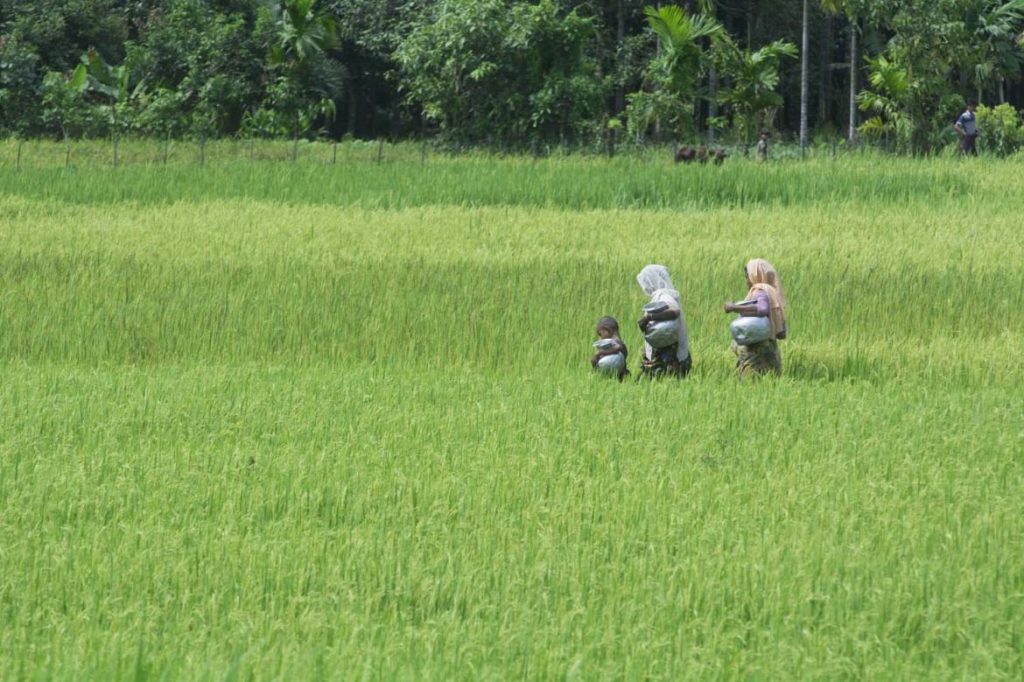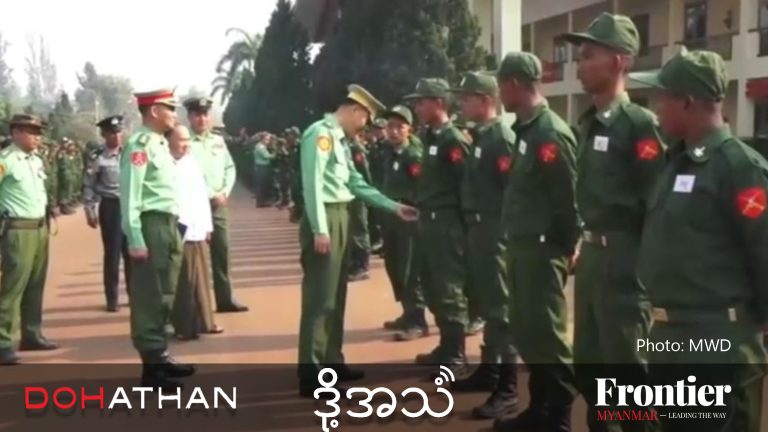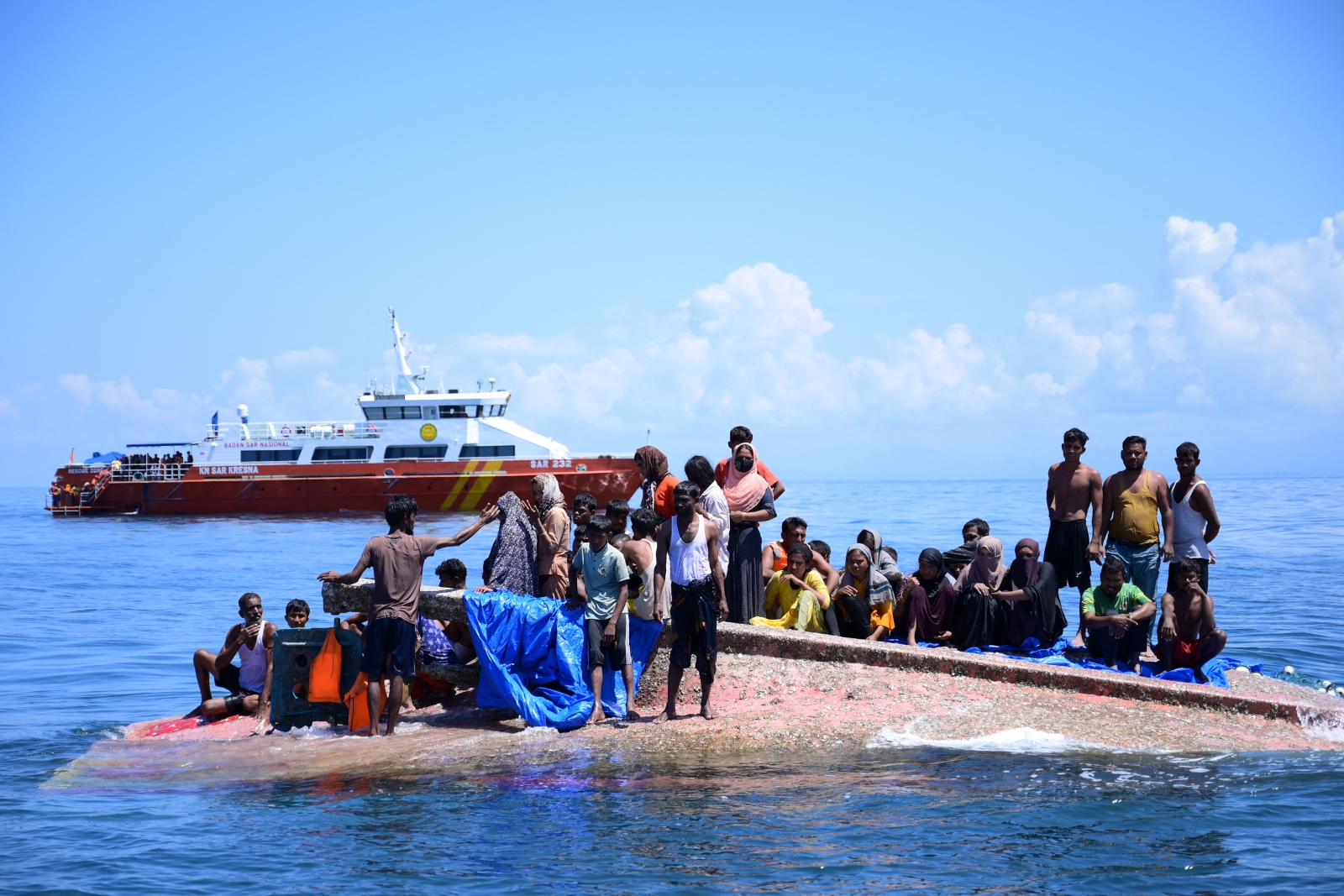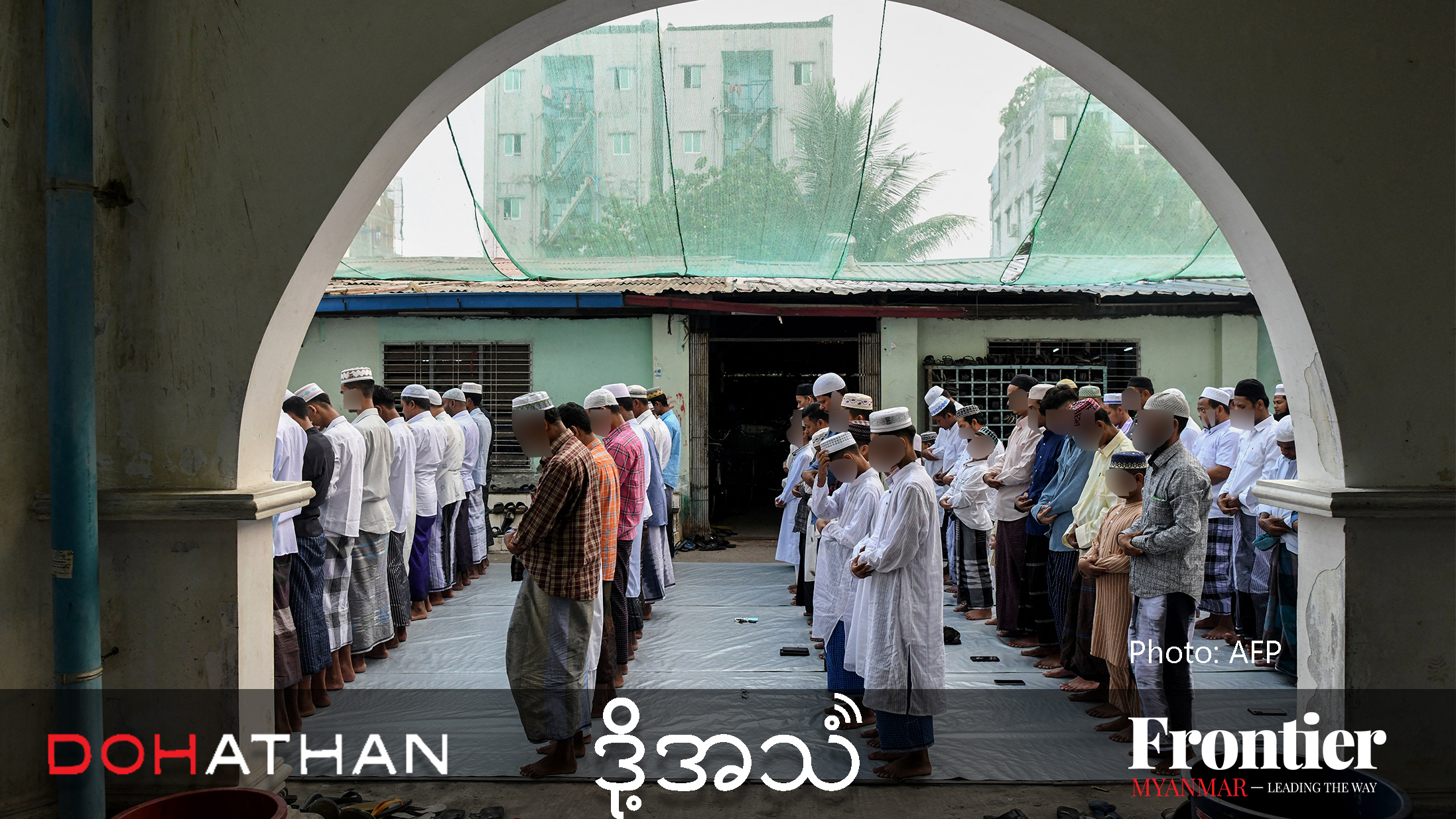In early October 2016, Rohingya USDP member Ko Win Kyaing had high hopes for a better life… but now wonders whether he will be able to return home to Myanmar.
By MRATT KYAW THU | FRONTIER
KO WIN KYAING is a pleasant, humble man and he greeted Frontier with a friendly “Mingalabar” when we entered the teashop at Taungpyo Letwe, in Rakhine State’s northern Maungdaw Township, just a few hundred metres from the border with Bangladesh.
It was October 7, 2016.
Win Kyaing, 37, was clearly pleased to welcome visitors to the teashop, although judging by the stares from his customers they were quite unused to seeing strangers.
Win Kyaing grew up in Taungpyo Letwe, a village that is mostly comprised of civilians. The adjoining village of Taungpyo Letyar – reachable via a small bridge – is home mostly to civil servants and Border Guard Police, and the two are collectively referred to as Taungpyo.
Support more independent journalism like this. Sign up to be a Frontier member.
Taungpyo Letwe was dry and dusty during Frontier’s visit at the end of the monsoon season. There were some houses for ethnic Bamar who had been resettled from Yangon in 2006 and members of the Mro and Daingnet ethnic minorities could be seen in the area.
Two vendors were selling used clothes by the road and in the so-called central market there were five shops selling household goods.
“My grandfather was the headman of this village,” recalled Win Kyaing, who speaks fluent Burmese. Frontier met many Muslims on the trip from Maungdaw to Taungpyo who spoke only basic Burmese but Win Kyaing’s facility with the language was exceptional.
Although Win Kyaing’s father and mother had held National Registration Cards, known as “three-fold cards”, they were not recognised as citizens by the military junta that took power in 1988. Because of that, Win Kyaing was only eligible for a temporary document known as a “white card”, which was made obsolete by a presidential decree in 2015. Despite this, Win Kyaing had been able to travel to Yangon that year to attend civic education training and workshops and had developed a useful network of contacts in the commercial capital.
Those without formal citizenship documents, such as Win Kyaing, usually cannot leave their township, but the workshops were organised by the Union Solidarity and Development Party and some well-connected organisations, so in Win Kyaing’s case permission wasn’t a problem.
“I’m a member of the USDP; I’ve been doing campaigning here,” said Win Kyaing, who was wearing a light-green T-shirt with the USDP logo.
He said there were 50,000 USDP members in Maungdaw Township and most residents supported the party because it was perceived as powerful and had been the political party most active in the area.
In a small Maungdaw village, Frontier met U Maung Htun, 46, a loyal member of the National League for Democracy, who had the party logo displayed on the front of his house. The NLD has a marginal presence in Maungdaw because it is supported neither by the Rakhine or Muslim communities.
Win Kyaing said the USDP’s supporters in Maungdaw hoped the party would one day be able to change their lives for the better by helping them to access citizenship. Like most Muslims in northern Rakhine State, he described himself as Rohingya, an ethnic designation that the government and most Myanmar people reject. He said he used the term because it had been accepted by Prime Minister U Nu and Brigadier General Aung Gyi in the post-independence period.
“I believe there will be change in the coming year,” he had told Frontier during our meeting.
Change came much sooner than that – and it has left the community divided and traumatised.
Two days after Frontier sat down for a chat in Win Kyaing’s teashop, on October 9, 2016, a group of militants who later called themselves the Arakan Rohingya Salvation Army launched a series of coordinated attacks on Border Guard Police posts in northern Rakhine, killing nine people.
The attacks destroyed Win Kyaing’s hopes for a better future. As the Tatmadaw sent reinforcements to northern Rakhine the only road to Taungpyo from Maungdaw was closed. When Frontier tried to reach the Taungpyo area after the October 9 attacks, security forces turned us back.
Calls to Win Kyaing’s phone went unanswered.
On August 25, 2017, ARSA launched a second round of coordinated attacks, which invited massive retaliation from the Tatmadaw in a clearance operation that resulted in more than 720,000 people fleeing to Bangladesh amid accusations of ethnic cleansing.
When Frontier returned to Taungpyo Letwe in January 2018, on a tour organised by the Myanmar Press Council, the teashop was gone. The village – once densely packed – had gone, too. All that was left were ashes. There was no trace of Win Kyaing.
But then in early October, on the second anniversary of the 2016 attacks, Frontier was contacted by Win Kyaing for the first time in two years. He was now in a refugee camp in Bangladesh.
He said life had been tough in Taungpyo after the October 2016 attacks. Commodities had increased sharply in price and the government had put in place restrictions on movement that prevented travel even to Maungdaw town.
In the immediate aftermath of the August 2017 attacks, Taungpyo residents were reluctant to leave their homes; rumours about killings, rapes and the torching of houses were making them anxious.
“I decided to leave after I heard that two people were killed by the security forces in a nearby village and that houses were being set on fire,” said Win Kyaing, who was among a group of hundreds of people that made the exodus to Bangladesh in September 2017.
“It was easy to just walk across the border into Bangladesh – it’s only about 10 or 15 minutes from my home and we didn’t see any security forces,” he told Frontier through Facebook Messenger from the sprawling Kutapalong refugee camp, one of the world’s biggest.
Win Kyaing said some of the refugees had come from Buthidaung Township and endured a hellish journey across the Mayu hills to reach the Bangladesh border, a trip that took four or five days in total.
He said many refugees wanted to return home but feared they would not be safe in Myanmar.
A plan to repatriate 485 families under an October 30 agreement between Bangladesh and Myanmar had created tensions in the camps and had led to clashes between refugees and officials, he added.
“I really want to go back, Myanmar is my home. The only thing I worry about is safety,” Win Kyaing said. “But even if we want to go back, it’s also really hard to get on the list for repatriation.”







